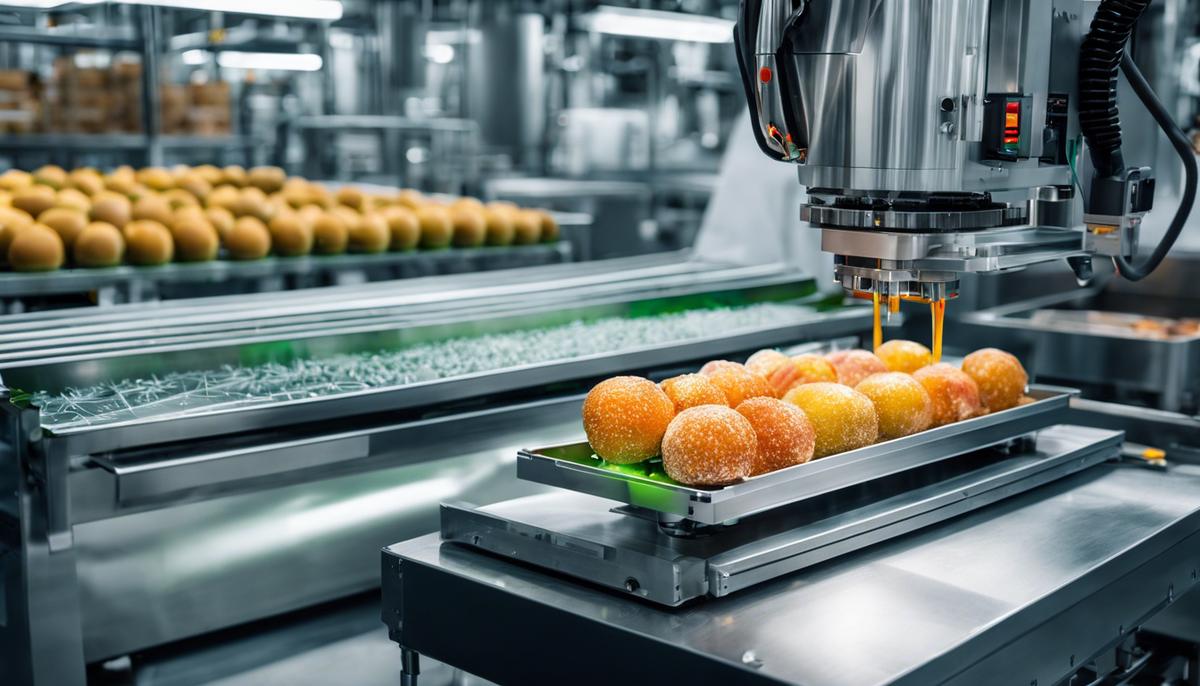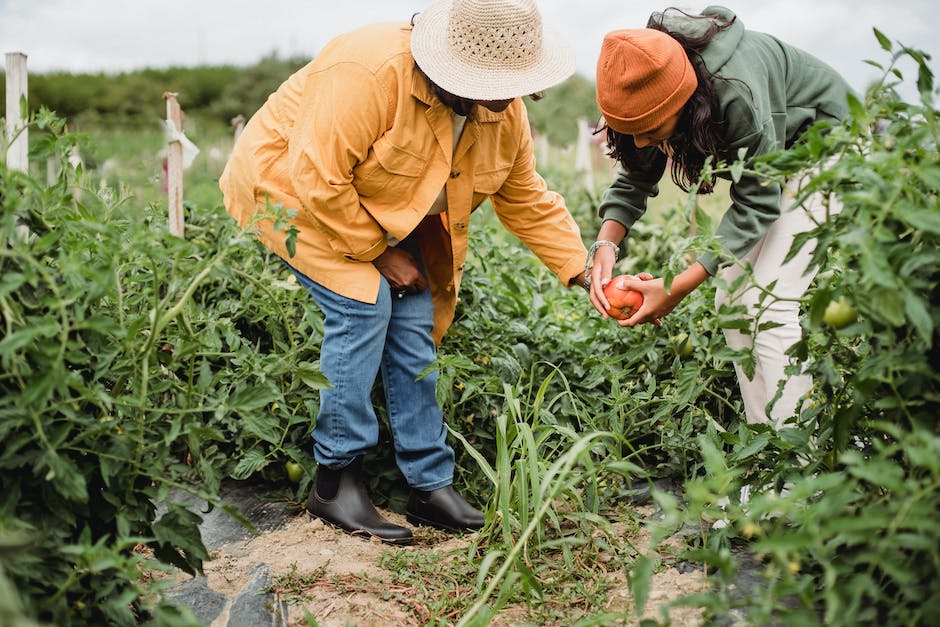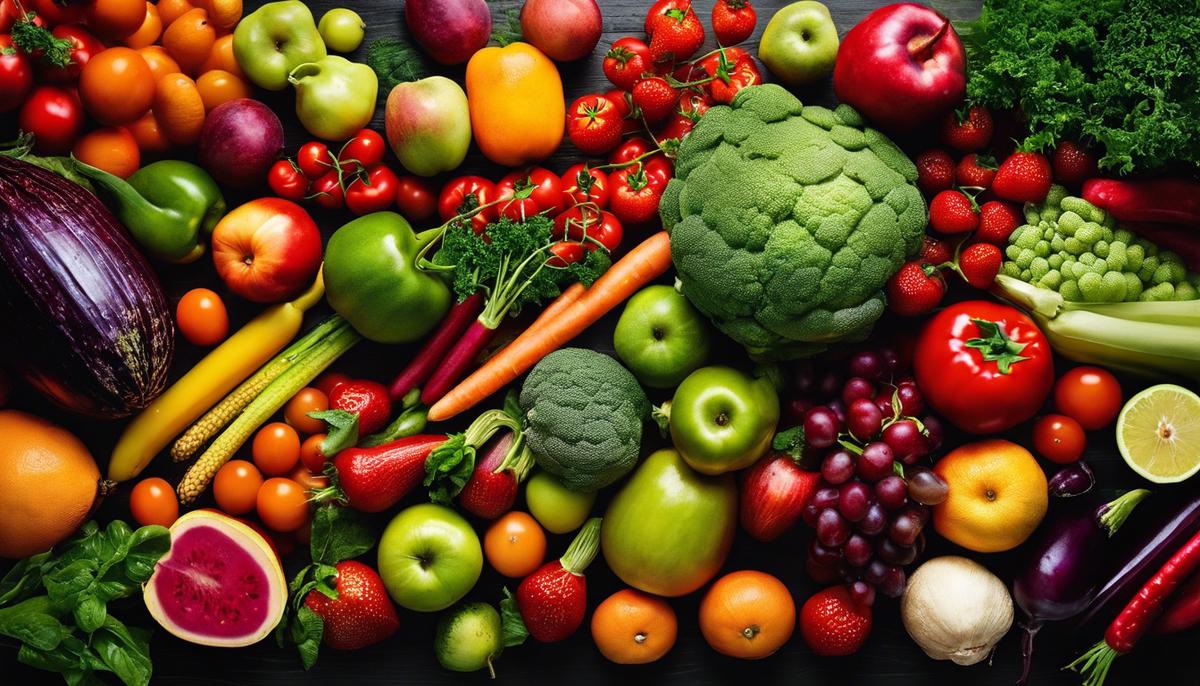

Agridisk
Egypt - Alexandria

Food manufacturing industry | the future and challenges
Description: The pace of change within the food manufacturing industry is nothing short of breathtaking, with technological breakthroughs and evolving consumer demands propelling a renaissance in how we produce, distribute, and think about our food. Advancements such as automation, artificial intelligence, the Internet of Things (IoT), and towering strides in biotechnology are not mere buzzwords but are integral cogs in the wheel driving the industry towards unprecedented levels of efficiency, safety, and personalization. As the planetary call for sustainability grows louder, the industry faces the herculean task of reconciling the need for continued innovation with the imperative to reduce environmental impact, adapt to a changing regulatory landscape, and meet the evolving preferences of an increasingly discerning and health-conscious consumer base. Technological advancements have long been acknowledged as the driving force behind significant improvements in various industrial sectors. The domain of food production has witnessed a proliferation of innovation that promises transformative effects on agricultural practices, food processing, and distribution. As the global population crescendos toward an estimated 9.7 billion people by the year 2050, the utilisation of technology in the food production chain becomes not only advantageous but essential. Precision agriculture has emerged as a paragon of how technology can augment the efficiency and sustainability of crop production. At its core, precision agriculture utilizes sophisticated sensors, unmanned aerial vehicles (UAVs), and geospatial data to monitor and manage crops with an accuracy previously unattainable. Through the implementation of data analytics and machine learning algorithms, it is possible to optimize irrigation, fertilization, and pest control on a granular level. This targeted approach can lead to a reduction in resource wastage and an increase in crop yield, contributing to a more sustainable agricultural model. Advances in genetic engineering and biotechnology herald a new era in crop development. The emergence of CRISPR-Cas9 gene-editing technology has equipped scientists with the means to modify the genetic structure of plants with precision never before achieved. This allows for the creation of crop variants that are resistant to pests and diseases, tolerant to various environmental stressors, or bolstered with an enhanced nutritional profile. As a result, the potential to increase agricultural productivity while reducing the reliance on chemical inputs presents a step forward in environmentally-conscious food production. In the intricate web of food supply chains, traceability and efficiency are pivotal. Blockchain technology is a cornerstone in the digitalization efforts to revamp supply chain management. By creating a decentralized, immutable ledger for recording the production, handling, and distribution of food products, blockchain assures transparency and facilitates the traceability of products from farm to fork. This heightened level of monitoring can vastly improve food safety standards, mitigate the impacts of food fraud, and enhance consumer confidence in the food market. The sphere of cellular agriculture has unveiled an altogether novel approach to food production. Through the culturing of animal cells in vitro, it is feasible to produce meat without raising livestock, an advancement with profound implications for food sustainability and animal welfare. In parallel, the exploration of alternative proteins derived from insects, algae, and plant-based sources seeks to diversify the global diet and offers a solution to the increasing protein demand posed by a growing population. Robotics and automation bring about a significant reshaping of roles within the food production industry. Automated machinery and robots can perform a multitude of tasks, ranging from crop harvesting to food packing and food service. With an enhanced ability to work tirelessly and in more adverse conditions than human labour, these technologies can reduce labour costs, increase productivity, and alleviate the hardships associated with manual agricultural work. In conclusion, technological advancements stand as a bulwark against the multifaceted challenges facing the future of food production. By harnessing the power of innovation and scientific pioneering in agriculture and food science, the likelihood of achieving global food security and sustainability is substantially increased. As these technologies continue to evolve, so too must the zeal with which we explore and implement them, for the quest of advancing human understanding and capability in nurturing our world is inexhaustible. In the current epoch, the conventional paradigms of food manufacturing are facing a transformative shift towards sustainable practices. As humanity grapples with imperatives ranging from climate crises to consumer demand for ethical production, sustainability is not merely a supplement to food manufacturing but a necessary trajectory to ensure both ecological and economic longevity. One pivotal area within sustainability is resource management, particularly in the realm of energy and water usage. Sustainable Energy Management Systems (SEMS) are becoming increasingly vital in food manufacturing facilities. These systems not only optimize energy consumption – with reverberating effects on cost reduction – but they also mitigate the carbon footprint of production facilities. This is not solely a matter of ethical gratification but one of compliance, as regulatory bodies impose more stringent standards on manufacturers to stunt environmental degradation. Similarly, Water Stewardship Programs (WSPs) in food manufacturing are instrumental in addressing the prodigious water consumption that has historically characterized the industry. Advances in water treatment and recycling technologies enable facilities to drastically reduce water wastage, thus conserving one of our most precious resources. This transformative approach within the industry signifies a recognition that the stewardship of natural resources is a critical component of a sustainable and resilient food system. Furthermore, the integration of Circular Economy models in food manufacturing processes is at the forefront of combating waste generation and fostering resource efficiency. Embracing circularity, manufacturers are innovating methods to utilize by-products and minimize waste at every juncture of the production cycle. This can include the repurposing of organic waste into feed or fertilizer, thus completing the loop of production in an ecologically harmonious manner. In addition to these frameworks, the engagement with local food systems plays a pivotal role in fortifying the sustainability of food manufacturing. This engagement manifests through sourcing raw materials locally to minimize transportation impacts and bolstering local economies. It also entails supporting agro-biodiversity by leveraging indigenous crops that are often underutilized yet possess robustness to local climatic conditions. Lastly, the incipient narrative of consumer consciousness is steering the food manufacturing industry towards transparency and authenticity. Ethical labeling and certification, such as organic, fair trade, or carbon-neutral, have burgeoned as not mere marketing tools but as indicators of a manufacturers' commitment to sustainable practices. These labels are the conduits through which informed consumers channel their preferences, propelling manufacturers to adopt processes that are at once profitable and planet-friendly. In conclusion, the integration of sustainability within the realm of food manufacturing is not a fleeting trend but an evolutionary force shaping the industry. Through judicious management of resources, circular economy practices, support for local agro-systems, and response to consumer advocacy, manufacturers are converging on a path that promises not only survival but thrives in the face of the multifaceted challenges of our time. The imperative is clear: embrace sustainability or risk obsolescence. In this unfolding chapter of food manufacturing, only through the lens of sustainability can the industry envisage a future that is both viable and virtuous. Addressing the continuous challenge of food safety and quality necessitates an integrated approach which, beyond the innovative measures already discussed such as precision agriculture and bioengineering, includes rigorous standards for hygiene and the implementation of advanced technologies in monitoring and detecting potential food safety hazards. Pathogen detection and intervention strategies have become a cornerstone in the realm of food safety. The industry is leveraging cutting-edge genomic and proteomic technologies for the rapid identification of microbes that may contaminate the food supply. Such detection techniques, including biosensors and molecular diagnostics, facilitate swift responses to potential outbreaks and greatly minimize the risk of widespread health issues. Furthermore, the deployment of artificial intelligence (AI) and machine learning (ML) is revolutionizing quality control. These systems intelligently sift through data, identifying trends and anomalies that indicate deviations from the quality standards. They provide critical insights that enable proactive rather than reactive measures, thereby assuring consistent quality and safety standards are maintained. Traceability systems in the food industry have also evolved, bolstering the capacity to track the provenance and journey of food products from farm to fork. Advanced traceability solutions, integrating blockchain technology, offer an immutable ledger of transactions and interactions. This level of insight not only enhances safety recalls when necessary, but also augments accountability throughout the supply chain, building consumer trust. Moreover, the adoption of Good Agricultural Practices (GAP) and Good Manufacturing Practices (GMP) by food producers and manufacturers ensures that food production is compliant with rigorous safety and quality guidelines. The meticulous documentation and certification processes inherent in these practices guarantee the integrity of the food products released into the market. A pivotal role is also played by international regulations and standard-setting bodies such as the Codex Alimentarius, which is instrumental in establishing harmonious, science-based food standards. Regulatory compliance, enforced through stringent local and international food laws, acts as a safeguard against the adulteration and contamination of food products. In the laboratory setting, advances in analytical chemistry enhance the capability to detect chemical residues and contaminants at lower thresholds than ever before. These pioneering techniques can discern minute quantities of pesticides, antibiotics, and other potential hazards, ensuring regulatory limits are not exceeded and consumer exposure is minimized. Lastly, the industry's commitment to continuous improvement is epitomized by robust research and development initiatives. Collaborations between academic institutions, private enterprises, and government agencies engender sophisticated methodologies and solutions to the imminent challenges to food safety and quality. Collectively, the manifold advancements in detection and quality management systems underscore the industry's unwavering dedication to upholding the safety and quality of food. As scientific knowledge expands and technology advances, the food industry is unequivocally poised to confront and surmount the ongoing and emerging challenges. ## Evolving Consumer Preferences: Catalyzing Innovation in Food Product Development In an era characterized by rapidly changing consumer preferences, the landscape of food manufacturing has seen profound transformations. Today, innovation in food product development is no longer a pioneering venture pursued by few but a necessary adaptation to remain competitive and responsive to the demands of an informed public. Current trends indicate a robust consumer shift towards health and wellness, prompting manufacturers to invest in research around nutritional enhancements in food products. Functional foods, fortified with essential vitamins, minerals, and additional beneficial compounds such as probiotics and plant-based proteins, are occupying an increasing share of the marketplace. The quest for improved food items echoes the public's growing awareness of the intimate connection between diet and health outcomes. The rise in prevalence of dietary restrictions—for reasons spanning from intolerances and allergies to personal or ethical considerations—necessitates the diversification of product lines. Gluten-free, lactose-free, nut-free and numerous other categorizations of foods have propelled manufacturers to reimagine traditional products to cater to these specific dietary needs. Equally important is the burgeoning vegetarian and vegan movement, spearheading the creation of alternative proteins and imitation animal products that mimic traditional flavors and textures. The enigmatic nature of ingredient lists, replete with unpronounceable constituents, has long been a source of consumer skepticism. The 'clean label' movement endeavors to simplify product compositions, stripping away artificial additives in favor of natural counterparts. This transparency extends beyond the mere listing of ingredients to encompass the entire lifecycle of the product, from sourcing to production, and insists upon farming practices that are ethically and environmentally sustainable. Food manufacturing must not only pivot to health and ethical considerations but also embrace the globalization of taste. The cross-cultural exchange that typifies the modern gastronomic environment incites manufacturers to explore a broader palette of flavors. There is an upsurge in the integration of exotic spices and ingredients that offer a culinary journey to consumers. As palates evolve and become more adventurous, so must the offerings of food manufacturers, merging tradition with innovative flavor combinations. The digital era has ushered in numerous platforms for consumer engagement and feedback. Manufacturers are increasingly attentive to social media trends, customer reviews, and interactive marketing strategies to steer product development. Such immediacy not only enhances brand loyalty but also fosters an iterative cycle of improvement, where consumer response directly informs the modification and creation of products. In conclusion, the dynamic and ever-evolving consumer preferences act as a catalyst for innovation within the food industry. Manufacturers are compelled to prioritize the healthfulness, dietary flexibility, transparency, and diversity of their products, while also being nimble in their engagement with technology. While this shift presents an array of challenges, it also unveils opportunities for growth, differentiation and fostering a closer relationship with the end consumer. As the industry continues to adapt and evolve, one may expect the continual emergence of novel food products that not only satisfy the palate but also reflect the complex tapestry of modern consumer values and expectations. Navigating Global Regulatory Divergence: Critical Considerations for Food Manufacturers In the contemporary global marketplace, food manufacturers contend with an intricate web of regulatory standards that vary considerably between jurisdictions. This divergence in regulatory frameworks presents a multifaceted challenge that extends beyond mere compliance; it is a dynamic that influences strategic decisions and shapes the innovation landscape within the sector. One immediate implication of this global regulatory divergence is the exigency for food manufacturers to develop adaptable compliance strategies. Regulatory heterogeneity necessitates a granular understanding of local laws and standards where compliance is not one-size-fits-all but tailored to the complex tapestry of demands set forth by distinct governing bodies. The creation of specialized teams or the deployment of sophisticated regulatory tracking software becomes indispensable in remaining ahead of the legislative curve and averting penalization or market entry barriers. Furthermore, the variability of standards often leads to increased production costs. The necessity to create multiple formulations of a product to cater to different markets adds to the complexity of manufacturing processes and can impede economies of scale. The divergence in permissible ingredients, labeling requirements, and nutrient content standards requires intricate adjustment of product development practices which, in turn, can lead to increased research and development expenditure. Another significant impact of regulatory divergence is evident in the field of product innovation. Manufacturers must tread a careful path when launching new products, ensuring that these innovations are tenable within the disparate regulatory frameworks of their target markets. This often requires additional research to substantiate health claims or to validate the safety of novel ingredients which can potentially stifle the speed at which new products are brought to market. The global regulatory mosaic also influences trade relations and market access. Differences in food safety and quality standards can serve as both trade barriers and facilitators, depending on whether manufacturers see these as obstacles to be overcome or opportunities to differentiate themselves in a crowded market. Those who manage to navigate this environment adeptly can leverage it to gain competitive advantage, entering markets that remain inaccessible to less agile competitors. The trade-offs between harmonization and regional autonomy are yet another theme of importance. While some argue for increased standardization of food regulations to facilitate trade and create clearer paths for global food distribution, others advocate for the right of regions to determine their own standards based on local culture, health concerns, and environmental factors. Finally, regulatory divergence necessitates robust advocacy and continuous engagement with policymakers and standard-setting organizations. Food manufacturers must not only adapt to the existing regulatory frameworks but also actively participate in the formulation and evolution of regulations to anticipate shifts and shape them in more favorable directions. In conclusion, as the food manufacturing industry becomes increasingly global, the management of regulatory discrepancies is an escalating concern that must be addressed with judicious planning, strategic foresight, and meticulous execution. Manufacturers must remain vigilant, proactive, and flexible to operate effectively in this intricate regulatory environment that transcends national boundaries and dictates the trajectory of global food commerce. As we grapple with the intricacies and opportunities presented by the food manufacturing landscape, the hinge upon which the future swings is clear: it is adaptability that will likely determine the survival and success of players within this dynamic field. Whether it's embracing technological advancements, spearheading sustainability, rigorously assuring food safety and quality, or precisely tailoring offerings to shifting market demands, the journey ahead demands resilience and foresight. The food industry stands at a crossroads where the route chosen—not just by manufacturers, but by each stakeholder in the food supply chain—will shape not only the future of our diets but the health of our planet and societies for generations to come.Food manufacturing industry | the future and challenges
Technological Innovations in Food Manufacturing
Technological Advancements and Their Paramount Role in the Future of Food Production
Precision Agriculture: The Forefront of Technological Ingenuity
The Genesis of Crop Biotechnology
The Digitalization of Food Supply Chains
Alternative Food Sources and the Advent of Cellular Agriculture
Automation and Robotics: Redefining Human Labour in Food Production

Sustainability and Environmental Impact | Food manufacturing industry
Cultivating Resilience: The Imperative of Sustainability in Food Manufacturing

Food Safety and Quality Assurance | Food manufacturing

Consumer Trends and Market Adaptation | Food manufacturing
Nutritional Quality and Health-Focused Formulations
Tailored Dietary Accommodations
Clean Label Crusade and Ingredient Transparency
Flavor Innovation and Global Culinary Fusions
Responsiveness to Technological Engagement

Regulatory Challenges and Compliance | Food manufacturing industry
